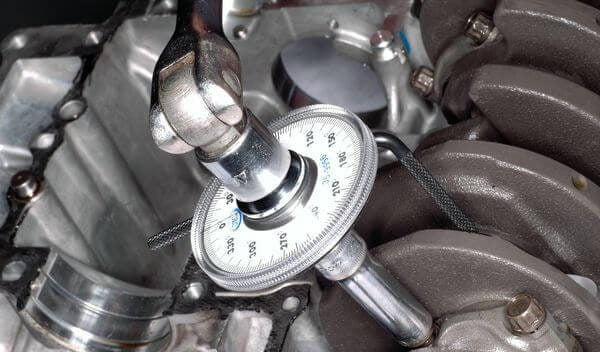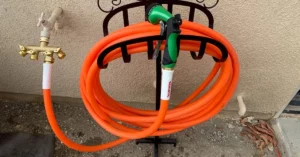
During the construction of the LS engine, you come across a specification referred to as the torque angle. The torque angle is considered to be the replacement of the maximum torque value for the fastening along with a certain fastener rotation amount. With the low baseline torque setting, you should ensure that the fastener is set, whereas the fastener rotates the certain amount for setting the clamp load and the final position perfectly.
Reasons to opt for torque angle
Though OEMs use different torque to yield fasteners to measure the torque angle, the process is not related to T-T-Y faster. It is believed to be a suitable option for stretching the bolt in a certain amount. It is known to be perfectly suitable for the torque to yield fastener. The bolt is beneficial for holding two different objects at once.
Speaking of automotive apps, you will come across specifications about the way you want two certain parts to be held together tightly. However, if it is held too tight, you might risk damaging different parts on your own. On the other hand, if it is held too loose, there is no sufficient clamp load, whereas the dual parts shift or leak under the load.
The clamp load amount is determined by the material, diameter of the fastener, and how the fastener gets stretched. If you fail to measure the bolt stretch, you should find another suitable option for the measurement of the bolt stretch. The automotive industry makes the right use of torque valves and acts as the yardstick. At times, an affordable torque angle gauge is used.
How does an angular torque gauge work?
If you want to know the working principle of angular torque gauge, you should take a look in the backward direction. It is essential for the engineers to determine the prerequisite clamp load for different items. After understanding it, they will execute the numbers, depending on the fastener material and size, for determining the bolt stretch, which is essential to get the specific clamp load. It involves taking the fastener thread pitch, followed by the determination about the degrees of rotation, which is necessary for stretching the fastener to the prerequisite amount.
Though it appears to be a bit confusing, the app engineers execute the big brain calculations. Then, all you require doing is setting the first stage torque for withstanding different variations within the conditions, followed by the measurement of rotation from the specific point in the forward direction.
If you want to achieve that, you will find a variety of tools at either price spectrum end, which ranges from different homemade templates, and are crafted with the paper, marker, protractor to the affordable dial gauges, which are known to fit between the socket and the ratchet.
How do you use angle torque?
The torque gauge contributes to being the kind of transducer responsible for converting the torque measurement into the electronic signal, which is converted, measured, and standardized. The torque gauges have become the need of the hour in measuring the force, which is applied to the fastener during the tightening.
With the enhancement in the torque which is applied to the sensor, there is a change in the electrical output signal proportionally. The torque sensors are recognized to be the torque measuring tool and the force measurement devices, which measure the force.
Primarily, two kinds of Torque Gauge sensors are available in the market, which are known as reaction torque sensors and rotary torque sensors. The reaction sensor is responsible for the measurement of the stationary torque, whereas the rotary sensor helps in the measurement of the rotational torque. Understanding the app, following by defining the specific needs, is considered an integral part of choosing the prerequisite torque sensor.
There are primarily two different kinds of torque gauge: reaction torque gauge and rotator torque gauge. In certain apps, the torque measurement, which is the specific in-line rotary sensor, is measured at the specific point in which the torque gets transferred to the ground with the aid of the reaction torque transducer.
The reaction torsion sensor is equipped with two different mounting flanges. One face is fixed to the rigid structural member or ground, whereas the other part is fixed to the rotary or rotating shafts. The rotation is known to generate the shear forces between different flanges, which are generated by the foil strain gauges, which are bonded to different sensor beams.
For a specific app, the reaction sensor is found to be less pricey and complicated than the rotary sensor. Besides this, the reactionary torque transducers act as the torque wrench calibration tool and the torque calibration tool. You can use the reaction torque sensors as miniature electrical torque screwdrivers. It provides a suitable opportunity to the Engineers in having live torque feedback and performing the torque study during assembly.
On the other hand, dynamic torque sensors or rotational sensors are used in different apps, in which the torque measurement is taken at the engine, spinning shaft and stationary motor. In certain cases, the transducer is known to rotate in the line after getting attached to the specific shaft.
Here, the rotary torque transducer gets fitted with the wireless electronics and slip ring for the torque signal transmission during rotation. The rotary torque transducers serve as the auditing and testing tools for the generators, turbines, and torque measuring tools for the measurement of the rotational torque.
You can make the right use of shaft to shaft Rotating Torque Sensor to monitor torque, accomplish feedback control. In addition to this, it offers the prerequisite opportunity to analyze the test stands efficiently. It also provides the helping hand in accomplishing the rotating shaft torque measurement with the aid of the strain gauge.
The rotary torque sensors are used on a wide scale for the measurement of the rotating shaft torque. Hence, it is a prerequisite to transfer the power to the specific strain gauge bridge. Moreover, it serves as the tool for receiving the signal from the particular rotating torque meter. You can achieve it with the aid of wireless telemetry, slip rings, and rotary transformers.

High Pressure Water Hose Guide
Contents Can You Use a Normal Hose for a Pressure Washer? Does Hose Diameter Affect Pressure? How do I make my garden hose high pressure?

What Is High Pressure Hose Used For?
Contents What is high pressure hose used for? How much PSI do I need to clean my driveway? What PSI is best for washing cars?

Rechargeable Hot Water Bottles Guide
Contents Are rechargeable hot water-bottles safe? How often should you change your hot water-bottle? How long does a rechargeable hot-water bottle last? How do Electric

Will A Heating Pad Ruin A Memory Foam Mattress?
Contents What is a Heat Mattress? Will a Heating Pad Ruin a Memory Foam Mattress? Buy Heating Pad on Amazon Conclusion One of the things

How Do You Clean A Suckle Portable Bottle Warmer?
Contents How does a suckle bottle warmer work? Do I need a bottle warmer if breastfeeding? How do you clean a suckle portable bottle warmer?

3 Tips for Take Care Lawn You Need to Know
Contents Is It Better To Water Lawn in the Morning or at Night? How Many Days a Week Should You Water Your Lawn? Should You

Emily
Head of Content @NotJustType I am a shopaholic and I am here to use my shopping experience and life skill to share to everyone. If you have any question for life, home, garden, you can let me know!
Share this article
Subscribe for weekly updates
